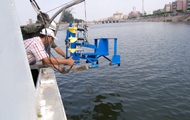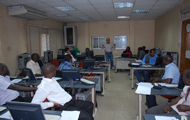|
|
The institute has a history of collaboration in research studies with international academic, research institutions. A collaboration between HRI and HR-Wallingford was focused on knowledge transfer and capacity building. Research collaboration with Deltares was focused on sediment transport and morphological related studies. One of the fruitful outcomes of this collaboration was building a mechanical bedload sampler for sand bed rivers (http://ascelibrary.org/doi/abs/10.1061/(ASCE)0733-9429(1994)120:12(1364)). Several scale and numerical models were used to model riverine and coastal systems internationally or abroad were carried in the Institute, such as examining the placement of submerged vanes in the De Wall River of the Netherlands, and the hydrodynamics and sedimentation problems at Ghezlan Power Plant in Saudi Arabi. Recently, the institute has been collaborating with the university of South Carolina on extensive studies of dam breach using physical models. The transport of sediments, sorting, depositional patterns and the evolution of landforms are pieces of a puzzle we put together towards an understanding of fluvial dynamics. The investigation of the fate and transport of pollutants such as toxicants ultimately helps in the formation of contingency plans, while analyzing the transport of nutrients can help improving the ecosystem function. The previous lines of research address questions by authorities, stakeholders and decision makers on river management and the preservation of natural resources. Current research interests:
• Hydrodynamic controls on equilibrium and river morphology |

